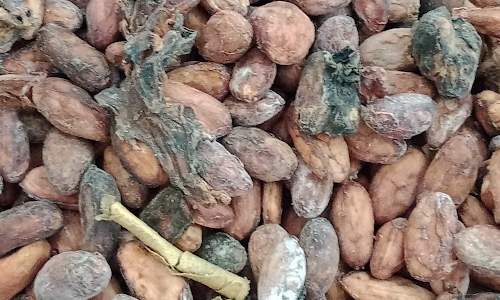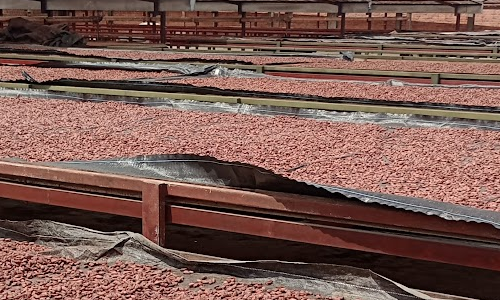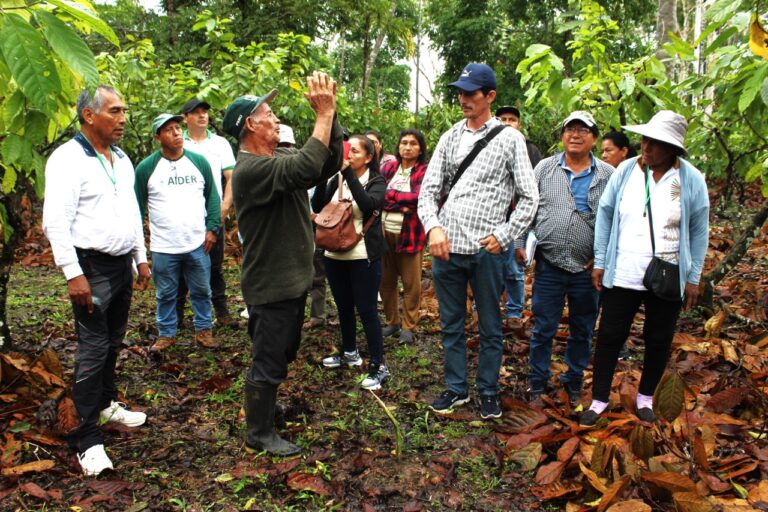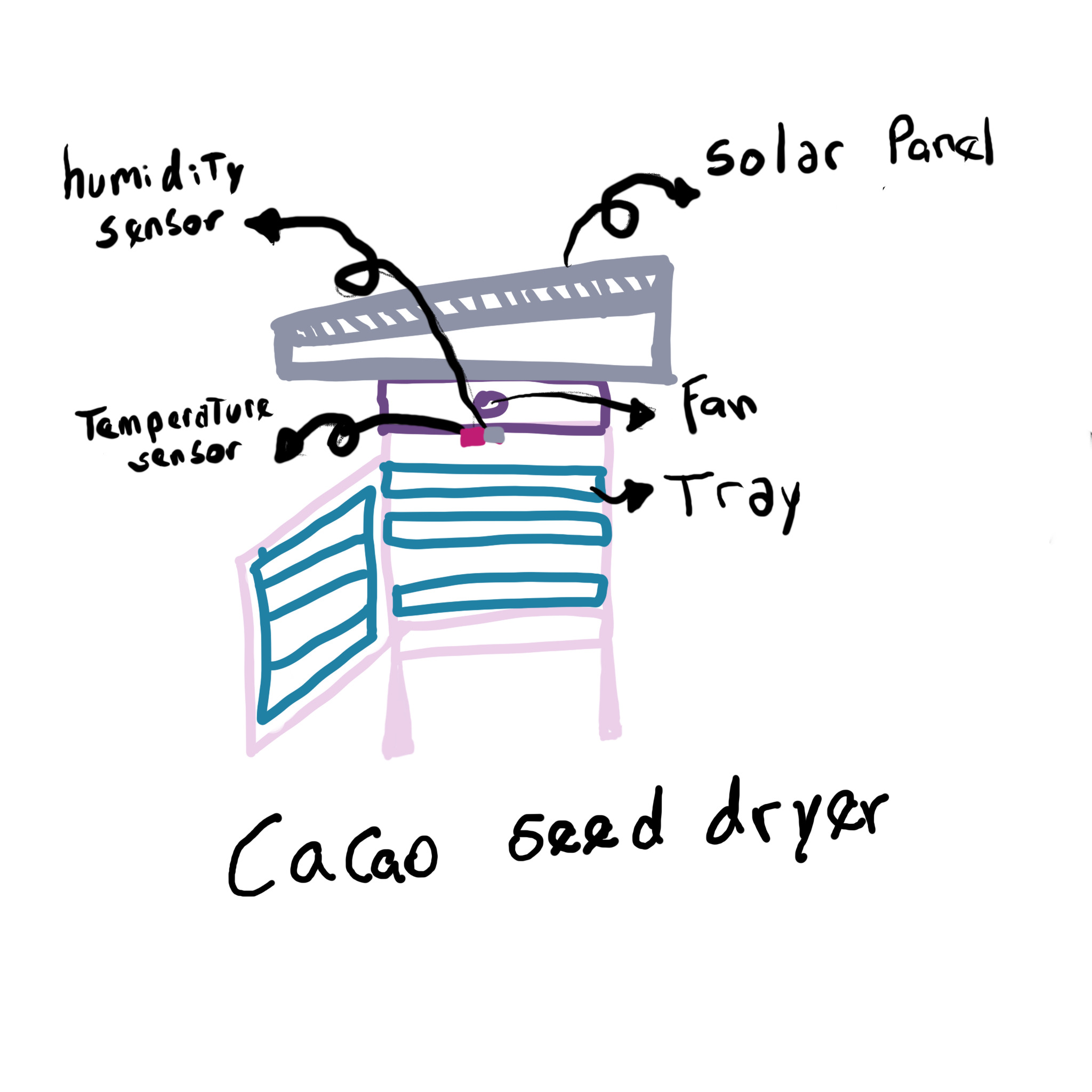Final project
Agriculture and technology in Peru, Seed ready

Gantt chart of everything I need to do for my project
Project Presentation
Fruit and Seed Dryer for Homes and Farmers
The objective of this project is to design and build a fruit and seed dryer that can be used both for domestic use and to support farmers in improving their drying processes. This dryer will have a temperature and humidity control system, allowing efficient and continuous drying without depending on weather conditions.
Problematic
Many people do not finish consuming all the fruit they buy before it spoils. A fruit and seed dryer at home would make better use of these foods, reducing waste.
Farmers, especially in regions like Madre de Dios, face significant challenges drying their products outdoors, exposed to weather risks such as rain, which can ruin production.
My purpose of the project is about cocoa where farmers in the city of Madre de Dios can take advantage of the whole day to dry these seeds because in the places where they do the drying is outdoors with direct sun with probability if it rains and this makes all production is lost, then with this drying module where they will be under roof and will have control of temperature and humidity where the heat will be continuous throughout the space and will be powered with solar panels and direct energy so it can be more viable.
The farmers of Madre de Dios have difficulty implementing state-of-the-art equipment since at the time of maintenance they do not have personnel or when it fails they do not have how to repair it and they lose money for it. With this basic but very useful module, the aim is to facilitate the drying of these seeds and improve the quality in the process. For this, I will use an ambient temperature sensor,an ambient humidity sensor , a fan, some heating plates, a microcontroller to be able to program and control all the sensors, a motor to vibrate the plates where the seeds will be found and these are rotating continuously and the solar panel so that it can have energy storage in a battery and it can continue working at night like this This process will be faster and they can continue with the next step of their production.
Copoazu

Copoazu, scientifically named Theobroma grandiflorum, is a tropical fruit originating in the Amazon region of South America. This fruit, characterized by its creamy white pulp, has a unique flavor that combines notes of chocolate, vanilla and tropical fruits. Its culinary versatility is reflected in its use in the preparation of juices, smoothies, ice cream and other food products. In addition to its gastronomic appeal, copoazú stands out for its theobromine content, a substance with stimulant properties similar to caffeine. This component, along with possible antioxidant properties, suggests potential health benefits. The fruit, grown in tropical regions such as Peru, Colombia, Ecuador and Brazil, thus becomes a valuable resource, not only for its exquisite flavor, but also for its contribution to the diversity of tropical fruits and its potential contribution to health.
Fungi in Cacao and Copoazu

Inadequate drying of copoazú seeds can lead to various problems that affect their quality and flavor. Excessive fermentation during the process can introduce undesirable flavors, while the presence of contaminants such as molds and fungi, facilitated by improper drying, can affect both flavor and food safety. In addition, prolonged exposure to air can induce oxidation of compounds present in the seeds, affecting their color and flavor. Improper time or temperature during drying can compromise the integrity and nutritional quality of the seeds. Rough handling during this process could also result in physical damage. Finally, improper storage after drying, either due to moisture absorption or inadequate environmental conditions, can compromise the overall quality of copoazú seeds. Therefore, it is essential to implement proper drying practices, carefully controlling conditions to preserve seed integrity and quality.
The drying method with a translucent ceiling

Traditional cocoa drying methods encompass a variety of techniques adapted to local conditions and available resources. Often, cocoa beans are dried in the sun, spread out on open air platforms and requiring regular rotation to ensure uniform drying. Another common practice is drying on racks or raised beds, encouraging air circulation to prevent moisture accumulation. In some cases, seeds are placed in sacks or suspended on elevated structures to protect them from the soil. Methods such as drying in traditional ovens fueled by wood or charcoal have also been used, as well as exposure on cement floors or drums. For certain specialty cocoas, shade drying is used to preserve more delicate flavors. The choice of method is often based on local considerations and the quest to preserve the quality of the cocoa, a process essential to influence the final characteristics of the chocolate.
Traditional cocoa and Copoazu drying methods

The translucent roof drying method involves the use of structures covered with transparent or translucent materials to protect the cocoa beans during the drying process. Instead of exposing the beans directly to the sun or under an opaque roof, this technique allows sunlight to penetrate through the roof while providing protection from rain and other adverse weather conditions. By maintaining a suitable temperature for drying and avoiding overexposure to the sun, translucent roof drying aims to create optimal conditions for preserving the quality and flavor of cocoa beans. This approach is used in some regions to optimize the drying process, ensuring controlled and efficient protection from the elements, and making effective use of sunlight.
Comunidades nativas

22 farmers from the native communities of Tres Islas, Infierno and Cooperativa Agraria de Servicios Múltiples Tambopata Candamo (COOPASER) of Madre de Dios, reinforce their knowledge of good agroforestry economic practices in Ucayali. One of the most important problems in the Madre de Dios region is deforestation. To date, about 23,000 hectares of forest have been reported lost, according to MINAM's Forest Cover Monitoring Module (MMCB). important strategies being promoted is to collaborate with settlers and natives located in the buffer zone of the Tambopata National Reserve and Bahuaja Sonene National Park in Madre de Dios to implement sustainable activities such as agroforestry with cacao in degraded areas.
shopping for fruit at the market

In the markets of Lima they sell all kinds of delicious fruits that I love buying, but there are problems when I forget that I buy too much and I don't eat the fruit on time.
shopping for fruit at the market

I love apples a lot so I thought about drying them because it is usually very expensive to buy dried fruit, so I thought I could use it at home but it could also be used for agriculture.


